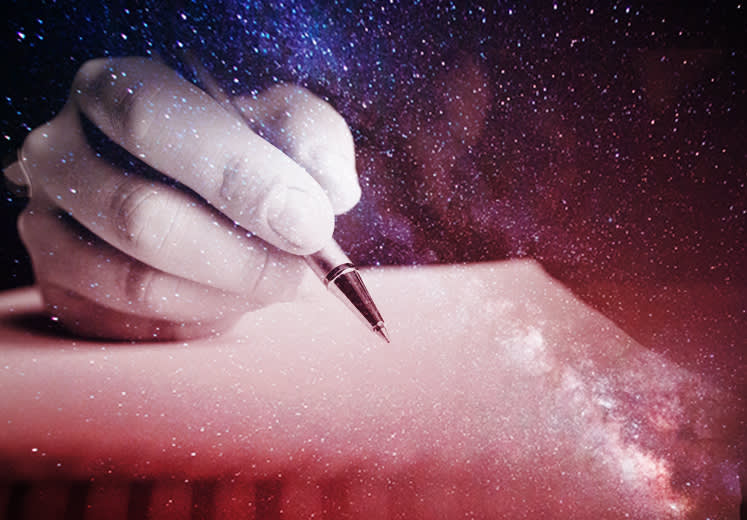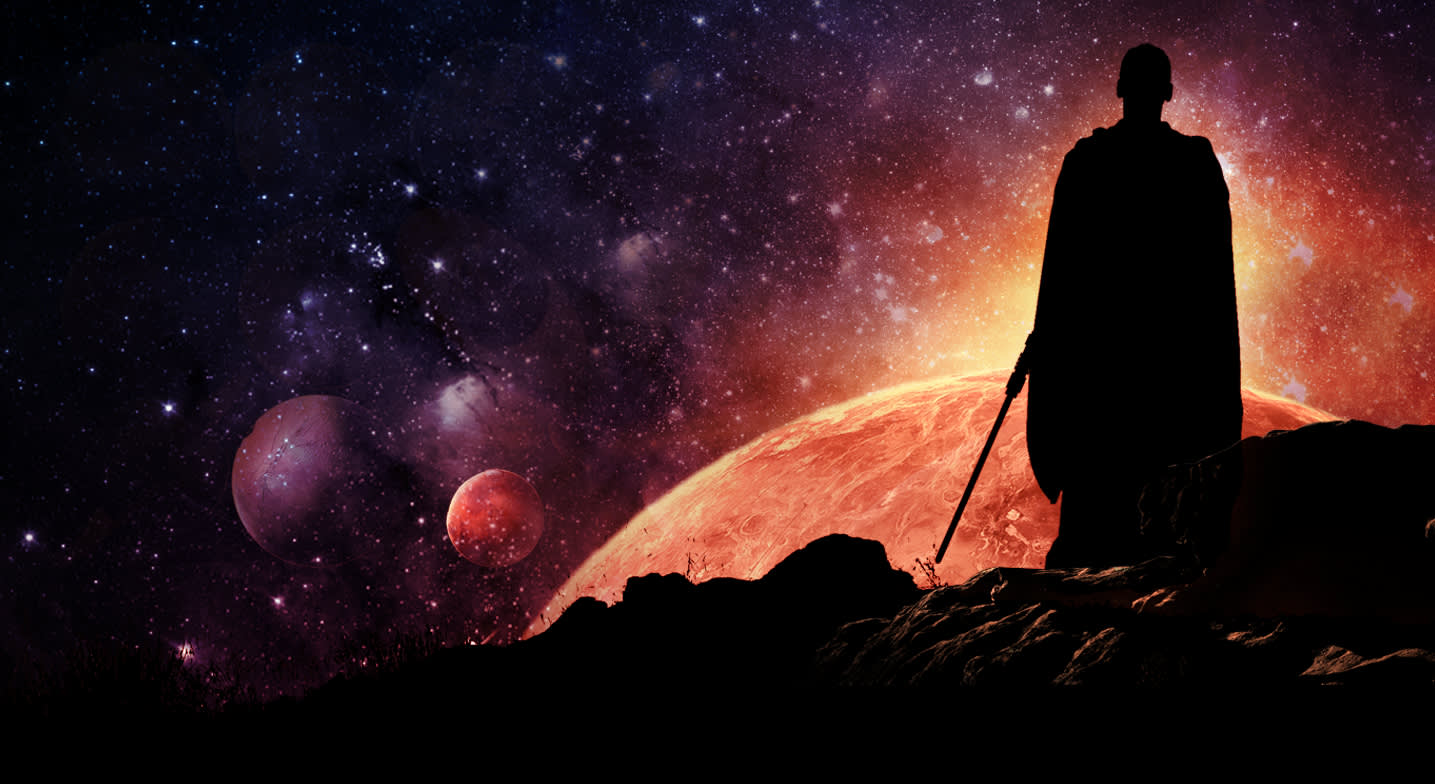It’s been nearly 40 years since Star Wars hit theaters, but thanks to the box-office success of The Force Awakens and Rogue One — and one of the most devoted fandoms ever — the appetite for new Star Wars stories is stronger than ever. Although The Last Jedi doesn’t come out until the end of the year, if you can’t wait that long for your fix, there’s another option: a slew of new novels that explore everything from Princess Leia’s time in the Galactic Senate to the inner workings of Rebel infantry.
Writing Star Wars novels sounds like a dream job for most fans, so how do you get a gig like that, anyway? Although there’s no single path, most of the authors behind the licensed books are established novelists, and they also tend to be huge fans in their own right — some even got their start by writing fan fiction.
“I’ve wanted to be a writer since I was a kid, honestly, and you’re darn tootin’ that I wrote Star Wars fanfic back then,” says Chuck Wendig, the author of Star Wars: Aftermath. As an adult, he began scripting pen-and-paper role-playing games and eventually moved into novels, but caught his big break with an offhand comment on Twitter about wanting to write a Star Wars book. “As it turns out, I possessed the Force for the span of time it took to compose and post that tweet, because it worked,” says Wendig.
Claudia Gray, the author of Star Wars: Lost Stars and Star Wars: Bloodline, also got her start as a fanfic writer before moving over to original young adult novels and, ultimately, to Star Wars books. “When I got the email that led to Lost Stars, I was honestly stunned,” says Gray.
Writing licensed Star Wars novels is a very different process from writing fan fiction. In the world of fanfic, there are no rules, but in the Lucasfilm-approved world of official storytelling, there are plenty. Some of those rules are obvious — new stories can’t conflict with old ones — while others are harder to discern.
“You can’t violate the ineffable ‘Star Wars feel,’ which is both the simplest and most difficult of rules to master,” says Alexander Freed, author of Rogue One: A Star Wars Story and Battlefront: Twilight Company. “It means describing a universe where absolute good and absolute evil really, truly exist, but where the space in between can be a little less clear cut.”
“You don’t declare the Force to be generated by an evil space jellyfish”
Since the Star Wars universe is shared, not just by the fans who enjoy it, but by many writers and artists working on films, novels, and comics, there’s a certain amount of care required for playing in the communal sandbox. As Freed puts it, you can’t break the toys so that no one else can play with them.
“You don’t reveal Luke’s father is ‘actually’ Han. You don’t declare the Force to be generated by an evil space jellyfish, and so forth,” says Freed. “You respect that a lot of other people are telling a lot of other stories and that those stories need space to grow and thrive. There’s basic common sense involved and the courtesy required to work in a shared universe.”

Writing new stories naturally requires that authors bring fresh ideas to the table, but always in ways that feel consistent with the characters, worlds, and overall tone that fans know and love. “New characters have to fit into the tapestry as if they’d always been there, just lurking a bit off-camera,” says Timothy Zahn, author of the just-released book Thrawn.
From the outset, writers work with the Star Wars Story Group, a division created by Lucasfilm to ensure the consistency of its vast universe and avoid continuity errors and conflicts as new books, comics, or games are added to the official canon.
Inevitably, there are occasional snags. While she was writing Star Wars: Lost Stars, Gray decided to place Darth Vader’s flagship, the Devastator, in one location, only to get a note from the Story Group that the ship simply couldn’t be there. “I said something like, ‘It’s an imaginary ship in our heads, so it could be anywhere?’” says Gray. “But not in this case! Other canon had already done something with the Devastator in that window of time.”
Rather than scripting tales that involve the most iconic characters or events, some authors seek out times and places that are relatively undeveloped so that they have more room to explore without stepping on existing history. When Freed started working on the novel Battlefront: Twilight Company, which follows a Rebel military unit during the Galactic Civil War, he spent time researching whether there had already been any significant writing about the non-elite infantry of the Rebellion. “I knew broadly the sort of story I wanted to tell — an unglamorous story of front-line grunts — but the particulars were dependent on what already existed,” says Freed.
“I also researched broken arms and how much pain the average human can withstand before she passes out”
Writing these books can involve a lot of research, not just about the Star Wars universe itself, but real-world subjects as well, from politics to biology to physics. Preparing to tell the story of Battlefront: Twilight Company, for example, involved a lot of reading about military history, particularly modern civil wars and insurgencies.
“The Rebellion of the Star Wars galaxy is young, loosely organized, poorly equipped, and packed with barely trained volunteers,” says Freed. “In those respects, it can resemble various real-life militia and paramilitary groups more than it does the U.S. Armed Forces.”
E.K. Johnston, the author of the novel Star Wars: Ahsoka, read up on weapons and fighting styles for her story about the fan-favorite Jedi turned Rebel, Ahsoka Tano. “I also researched broken arms and how much pain the average human can withstand before she passes out, but that wasn’t very much fun,” jokes Johnston.
Although official Star Wars canon was redefined in 2014 to focus on the films and exclude the complex “expanded universe” created by decades of novels, comics, and games, some authors have found ways to drop little references from those older stories into their new books for longtime readers.
“I’ve brought in a couple of characters from my other Star Wars books, but only in small roles, as Easter eggs for fans of the Legends books and stories,” says Zahn.
While aligning new stories with the larger world is an important part of working in a shared universe, the most important rule of writing a Star Wars novel is the simplest: Tell an engaging story that grabs readers and doesn’t let them go.
“At its deepest core, there is really very little difference between writing a Star Wars novel and writing any other novel,” says Zahn. “In both cases, the goal of the storyteller is to create an exciting saga with characters the readers care about, put in some twists and turns and surprises, and then bring it all to a satisfying conclusion. If [it] succeeds on all those levels, then I’ve done my job.”






